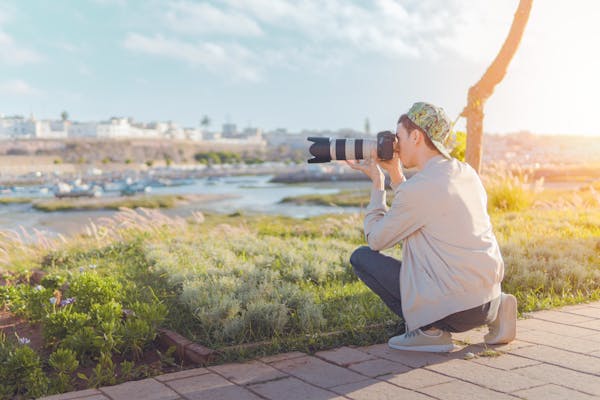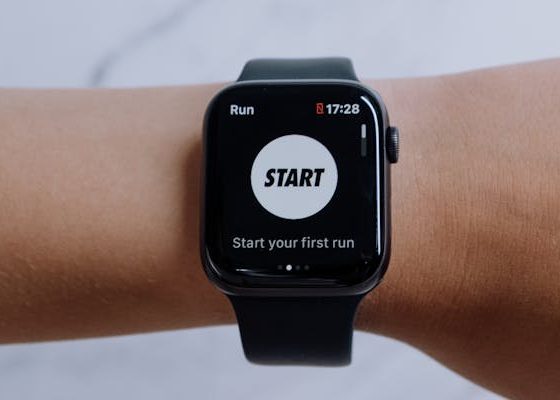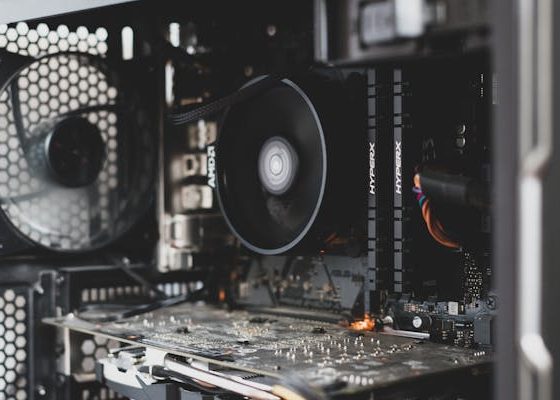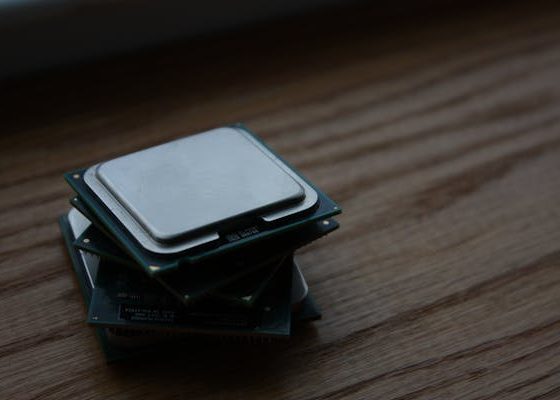In the world of photography, cameras play an indispensable role in defining the quality of your work. Among the plethora of choices available today, DSLR cameras remain the go-to option for both professional photographers and serious hobbyists. Renowned for their versatility, exceptional image quality, and expansive lens selections, DSLR cameras are considered a perfect choice for those who are passionate about capturing stunning photos. But with so many models on the market, choosing the best DSLR camera for photography can feel like a daunting task.

This comprehensive guide aims to simplify that process, presenting the best DSLR cameras across various categories, including beginner, enthusiast, and professional levels. Whether you’re looking for exceptional image quality, fast autofocus, or powerful video capabilities, this article will help you find the best DSLR camera for photography that suits your needs.
Understanding What Makes a DSLR Camera Special
Before we dive into specific models, it’s crucial to understand what makes DSLR cameras unique and why they continue to be one of the best options for photography. DSLR stands for Digital Single-Lens Reflex. This technology allows the camera to use a mirror mechanism to reflect light from the lens into an optical viewfinder. When you press the shutter button, the mirror flips up, and the light is captured by the sensor.
The advantages of DSLR cameras include:
- Optical Viewfinder: Unlike mirrorless cameras, DSLRs offer an optical viewfinder that provides a real-time, clear view of the scene you’re shooting. This is especially helpful in bright lighting conditions where electronic displays can be hard to see.
- Interchangeable Lenses: DSLR cameras support a wide range of lenses, from wide-angle to telephoto, allowing photographers to experiment with different types of shots. This flexibility makes them suitable for various photography styles, including landscape, portrait, wildlife, and macro photography.
- Better Battery Life: DSLRs generally offer longer battery life compared to mirrorless cameras because they don’t rely on electronic viewfinders (EVFs). Many DSLRs can take hundreds, if not thousands, of shots on a single charge, making them ideal for events and long shooting sessions.
- Excellent Image Quality: Due to larger image sensors and superior lens choices, DSLRs produce high-quality images with rich detail and excellent low-light performance. The larger sensor size allows for better light gathering, resulting in cleaner images with less noise, especially at higher ISO settings.
- Robust Build Quality: Many DSLRs are designed with weather sealing and durable materials, making them suitable for outdoor and extreme conditions. This ruggedness is a significant advantage for photographers who often shoot in various environments.
Key Factors to Consider When Choosing the Best DSLR Camera for Photography
Selecting the best DSLR camera for photography depends on several factors, including your budget, skill level, and the type of photography you enjoy. Here’s a rundown of key features to look out for:
- Megapixel Count: This determines the resolution of your images. Higher megapixels are essential for large prints or cropping images without losing detail. For instance, a 24-megapixel camera can produce high-quality prints up to 24×36 inches, while a 36-megapixel camera allows for even larger prints.
- Autofocus System: A fast and accurate autofocus system is crucial, especially for action, sports, or wildlife photography. Look for cameras with a higher number of autofocus points and advanced tracking capabilities.
- Low-Light Performance: Cameras with larger sensors typically perform better in low light, allowing you to capture clearer images without noise. Full-frame sensors generally excel in this area compared to APS-C sensors.
- Burst Rate (Frames Per Second): This is important for sports or action photographers who need to capture fast-moving subjects. A camera with a higher burst rate can help you capture the perfect moment in dynamic situations.
- Video Capabilities: Many photographers now look for DSLR cameras that offer 4K video recording along with stellar image quality. Features like in-body stabilization, high frame rates, and various recording formats enhance the videography experience.
- Weight and Size: Consider how portable the camera is if you plan to carry it for long periods. A lighter camera can be more convenient for travel, but it’s essential to balance this with the camera’s features and performance.
- Lens Ecosystem: Different DSLR brands have their own ecosystem of lenses. Nikon and Canon, for instance, offer an extensive range of lenses that can meet the needs of virtually any photographer. Research the available lenses before committing to a brand.
Best DSLR Cameras for Beginners
If you’re just starting out, investing in an entry-level DSLR that offers a balance of performance and simplicity is a great choice. Here are two of the best DSLR cameras for photography aimed at beginners.
a. Canon EOS Rebel T8i (Canon 850D)
The Canon EOS Rebel T8i is an excellent entry-level DSLR that offers a mix of advanced features in an easy-to-use package. It sports a 24.1-megapixel APS-C sensor, delivering sharp and vibrant images. The camera’s DIGIC 8 image processor provides solid performance, making it capable of shooting at up to 7 frames per second (fps), which is handy for fast-moving subjects.
One standout feature of the Rebel T8i is its user-friendly interface, which offers guided modes that explain each setting in detail, making it perfect for beginners still learning the ropes. The camera features a vari-angle touchscreen that allows for creative angles and easy navigation. Additionally, it supports 4K video recording and has built-in Wi-Fi and Bluetooth for easy file sharing, enabling photographers to post their images directly to social media.
Key Features:
- 24.1 MP APS-C sensor
- 45-point autofocus system
- 4K video recording at 24p
- Dual Pixel CMOS AF for live view shooting
- ISO range of 100-25,600 (expandable to 51,200)
- Vari-angle touchscreen
Why It’s Great for Beginners: The Canon EOS Rebel T8i offers an intuitive user interface, excellent image quality, and a robust autofocus system, making it one of the best DSLR cameras for photography at the beginner level. Its combination of features and price makes it a valuable investment for aspiring photographers.
b. Nikon D3500
Another top contender for beginners is the Nikon D3500. This affordable DSLR features a 24.2-megapixel APS-C sensor, which delivers sharp and colorful images. What sets the D3500 apart is its impressive battery life—offering up to 1,550 shots on a single charge—making it ideal for those long days of shooting.
The Nikon D3500 is designed with simplicity in mind. It has an easy-to-use Guide Mode that walks beginners through various shooting scenarios, helping them learn photography basics while taking great shots. While it lacks some of the advanced features of pricier models (like 4K video), it more than makes up for it with its excellent image quality and intuitive design. The camera also features a lightweight and compact body, making it easy to carry around.
Key Features:
- 24.2 MP APS-C sensor
- 5 fps continuous shooting
- 1080p Full HD video recording
- 11-point autofocus system
- ISO range of 100-25,600
- Lightweight and portable design
Why It’s Great for Beginners: With its outstanding battery life, intuitive controls, and great image quality, the Nikon D3500 is an excellent choice for those entering the world of DSLR photography. Its lightweight design and durability make it a perfect companion for travel and adventure photography.
Best DSLR Cameras for Enthusiasts
Enthusiasts who have outgrown their entry-level DSLRs or those looking to take their photography skills to the next level will appreciate models with more advanced features. Here are two of the best DSLR cameras for photography enthusiasts.
a. Nikon D7500
The Nikon D7500 is a well-rounded DSLR that offers powerful performance and advanced features in a relatively affordable package. It features a 20.9-megapixel APS-C sensor, delivering impressive image quality and low-light performance. The camera also has a robust 51-point autofocus system, which excels at tracking moving subjects, making it a great option for sports and wildlife photography.
One of the D7500’s standout features is its 4K video recording capability, making it an excellent choice for photographers who want to explore videography. The camera’s continuous shooting speed of 8 fps ensures you won’t miss crucial moments, and its tilting touchscreen LCD allows for easy framing at various angles. The camera also includes built-in Wi-Fi and Bluetooth, making it easy to transfer images to your smartphone or tablet.
Key Features:
- 20.9 MP APS-C sensor
- 51-point autofocus system
- 4K UHD video recording at 30p
- 8 fps burst shooting
- ISO range of 100-51,200 (expandable to 1,640,000)
- Tilting touchscreen LCD
Why It’s Great for Enthusiasts: The Nikon D7500 offers a powerful blend of speed, video capabilities, and advanced autofocus, making it ideal for enthusiasts who want to elevate their photography skills. Its robust feature set and image quality allow photographers to explore various creative possibilities.
b. Canon EOS 90D
The Canon EOS 90D is another excellent option for enthusiasts who want a versatile DSLR that excels in both photography and videography. It boasts a 32.5-megapixel APS-C sensor, making it one of the highest-resolution APS-C cameras available. This results in incredibly detailed images, even when cropping or enlarging.
The 90D also features an advanced Dual Pixel CMOS autofocus system, which delivers fast and accurate focusing, especially when shooting in live view mode or recording video. With 4K video recording at 30fps and 10 fps burst shooting, the Canon EOS 90D is a fantastic choice for both action photographers and videographers. The camera’s fully articulating touchscreen allows for unique angles and self-portraits, enhancing its usability.
Key Features:
- 32.5 MP APS-C sensor
- 45-point autofocus system
- 4K video recording at 30p
- 10 fps continuous shooting
- ISO range of 100-25,600 (expandable to 51,200)
- Fully articulating touchscreen
Why It’s Great for Enthusiasts: The Canon EOS 90D’s high-resolution sensor, fast autofocus, and impressive video capabilities make it one of the best DSLR cameras for photography enthusiasts who demand versatility. Its robust feature set allows photographers to tackle various styles and subjects.
Best DSLR Cameras for Professional Photographers
Professional photographers often demand the highest level of performance from their gear. Whether you’re shooting high-end portraits, landscapes, or commercial photography, these DSLR cameras deliver unmatched image quality and performance.
a. Nikon D850
The Nikon D850 is a top-tier full-frame DSLR that’s widely regarded as one of the best cameras ever made. Its 45.7-megapixel sensor delivers stunning image quality, with remarkable detail and dynamic range. The D850 is a true workhorse, suitable for everything from portrait photography to wildlife and sports.
One of the standout features of the Nikon D850 is its impressive low-light performance and fast autofocus system. The camera’s 153-point autofocus system is excellent for tracking fast-moving subjects, making it perfect for wildlife or sports photography. Additionally, it can shoot at 7 fps (expandable to 9 fps with a battery grip), and it also offers 4K video recording with full-frame readout. The camera’s weather-sealed body is designed to withstand challenging shooting conditions, providing durability for professionals.
Key Features:
- 45.7 MP full-frame sensor
- 153-point autofocus system
- 4K UHD video recording at 30p
- 7 fps continuous shooting (expandable to 9 fps)
- ISO range of 64-25,600 (expandable to 102,400)
- Weather-sealed body
Why It’s Great for Professionals: The Nikon D850’s high-resolution sensor, outstanding autofocus system, and excellent low-light performance make it the best DSLR camera for photography professionals who demand the highest quality. Its versatility makes it suitable for various photography styles, including landscapes, portraits, and sports.
b. Canon EOS-1D X Mark III
The Canon EOS-1D X Mark III is Canon’s flagship DSLR, designed for professionals who need extreme performance in demanding environments. This camera is a beast when it comes to action photography, offering up to 20 fps shooting with the electronic shutter and 16 fps with the mechanical shutter.
Equipped with a 20.1-megapixel full-frame sensor, the EOS-1D X Mark III delivers fast, high-quality images with stunning color accuracy and detail. The advanced autofocus system features 191 points, ensuring that you can track and lock onto subjects with ease, even in challenging lighting conditions. Additionally, the camera supports 4K video recording at 60fps, making it a versatile tool for both photography and video professionals. The robust construction of the camera is designed for high-impact use, making it ideal for sports and wildlife photographers who work in rigorous conditions.
Key Features:
- 20.1 MP full-frame sensor
- 191-point autofocus system
- 4K video recording at 60 fps
- 20 fps continuous shooting
- ISO range of 100-102,400 (expandable to 819,200)
- Rugged, weather-sealed body
Why It’s Great for Professionals: The Canon EOS-1D X Mark III is the best DSLR camera for photography professionals who need extreme speed and accuracy, especially for sports, wildlife, and action photography. Its superior autofocus system and rapid burst shooting capabilities make it a favorite among professional sports photographers.
Photography Styles and Choosing the Right DSLR Camera
When choosing the best DSLR camera for photography, it’s essential to consider the type of photography you plan to pursue. Different styles may require specific features or capabilities:
- Portrait Photography: A camera with a high-resolution sensor, good low-light performance, and excellent lens options for depth of field effects is ideal. Look for cameras with fast autofocus systems to capture sharp images of moving subjects.
- Landscape Photography: For landscapes, a camera with a high-resolution sensor and excellent dynamic range is crucial for capturing detail in both highlights and shadows. A wide range of lenses, including wide-angle options, is beneficial.
- Wildlife and Sports Photography: These genres often require fast burst rates and advanced autofocus systems to capture quick movements. A rugged, weather-sealed body is also essential for outdoor shooting.
- Event Photography: Events can vary widely in lighting conditions, so a camera with good low-light performance, fast autofocus, and versatile lenses (like zoom lenses) is beneficial for capturing spontaneous moments.
- Videography: If you plan to shoot videos, look for DSLR cameras with 4K video capabilities, advanced autofocus systems for video, and features like microphone inputs and headphone jacks for audio control.
The Future of DSLR Cameras
As the photography industry evolves, there’s a growing trend towards mirrorless cameras, which offer advantages such as compact size and advanced video features. However, DSLR cameras still hold a strong place in the market due to their optical viewfinders, extensive lens ecosystems, and superior battery life.
Many manufacturers are investing in improving their DSLR lines, with new models featuring advanced technology that meets the demands of modern photographers. For those who appreciate the tactile experience of a DSLR and the optical viewfinder, there’s still a wealth of options available.
Tips for Getting Started with Your DSLR Camera
Once you’ve selected the best DSLR camera for photography that fits your needs, consider these tips to help you get started on your photographic journey:
- Read the Manual: Familiarize yourself with the camera’s settings and features by reading the manual. Understanding your equipment is crucial to maximizing its potential.
- Practice: The best way to learn photography is through practice. Experiment with different settings, modes, and lighting conditions to see how your camera responds.
- Explore Composition Techniques: Learn the basics of composition, including the rule of thirds, leading lines, and framing. Good composition can significantly enhance the quality of your images.
- Understand Exposure: Get comfortable with the exposure triangle—aperture, shutter speed, and ISO. Understanding how these elements work together will help you capture well-exposed images.
- Experiment with Lenses: Try different lenses to see how they affect your images. Wide-angle lenses are great for landscapes, while prime lenses are perfect for portraits.
- Edit Your Photos: Post-processing can elevate your images. Learn basic editing techniques using software like Adobe Lightroom or Photoshop to enhance your photos further.
- Join Photography Communities: Engage with other photographers through online forums, social media groups, or local clubs. Sharing your work and receiving feedback can accelerate your learning.
- Have Fun: Above all, enjoy the process of photography. Experiment, explore, and don’t be afraid to make mistakes; they are a vital part of learning.
Conclusion:
In conclusion, the best DSLR camera for photography depends on your individual needs, skill level, and budget. For beginners, the Canon EOS Rebel T8i and Nikon D3500 offer excellent image quality and user-friendly interfaces, making them perfect for those just starting out. Enthusiasts looking to elevate their photography skills will appreciate the advanced features of the Nikon D7500 and Canon EOS 90D, both of which deliver powerful performance without overwhelming complexity.
For professionals who demand the best of the best, the Nikon D850 and Canon EOS-1D X Mark III offer unparalleled image quality, speed, and precision, making them ideal for high-end photography in any genre.
No matter which camera you choose, remember that the best DSLR camera for photography is the one that fits your style, needs, and vision. The world of DSLR photography is vast and rewarding, and with the right camera in hand, you’ll be able to capture stunning moments that last a lifetime.














